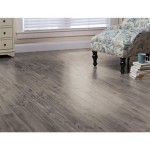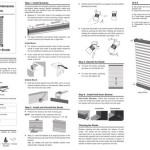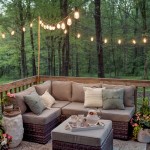Plaid Home Decor: Exploring Fabric and Texture
Plaid, a timeless pattern of crisscrossing horizontal and vertical lines, offers a versatile design element for home decor. Its enduring popularity stems from its ability to evoke various aesthetics, from rustic farmhouse charm to sophisticated preppy styles. Understanding the interplay of fabric and texture within plaid designs allows for informed choices that enhance any living space.
Fabric Choices for Plaid Home Decor
The choice of fabric significantly impacts the overall look and feel of plaid home decor. Different materials lend themselves to various applications and contribute to the pattern's visual impact. Cotton, a breathable and durable natural fiber, is a popular choice for plaid bedding, curtains, and upholstery. Its versatility allows for a range of plaid styles, from lightweight and airy to heavier, more substantial weaves.
Linen, another natural fiber, offers a relaxed, slightly rumpled aesthetic. Its inherent texture adds depth to plaid patterns, making it ideal for cushions, throws, and tablecloths in casual settings. Wool, known for its warmth and insulation, contributes a cozy feel to plaid blankets, rugs, and upholstery, particularly suited for colder climates.
Synthetic fabrics, like polyester and acrylic, offer durability and resistance to wrinkles and fading. These materials are often used for outdoor applications of plaid, such as patio cushions and umbrellas. Blended fabrics, combining natural and synthetic fibers, provide a balance of desirable properties, such as the softness of cotton with the wrinkle resistance of polyester.
Texture in Plaid Design
Texture plays a crucial role in how plaid is perceived. The weave of the fabric contributes significantly to its tactile quality and visual depth. Twill weaves, characterized by diagonal parallel ribs, create a subtle textural effect that adds interest to plaid designs. A herringbone weave, with its V-shaped pattern, adds a more pronounced texture, often used in upholstery and heavier drapery fabrics.
The weight of the fabric also influences texture. Lightweight fabrics, like cotton voile, drape softly and create a flowing effect, while heavier fabrics, like wool flannel, offer a more substantial and cozy feel. The use of different yarn thicknesses within the plaid pattern can further enhance texture, creating raised or recessed areas that add visual and tactile interest.
Scale and Color in Plaid Home Decor
The scale of the plaid pattern, referring to the size of the checks or squares, significantly impacts its visual presence. Large-scale plaids make a bold statement and can be used to create a focal point in a room. Smaller-scale plaids offer a more subtle pattern and can be used in larger areas or combined with other patterns.
Color combinations within the plaid design also play a vital role in its overall effect. Traditional tartans, featuring deep reds, greens, and blues, evoke a sense of heritage and tradition. Modern interpretations of plaid employ a wider range of colors, from pastel hues to vibrant neons, allowing for greater versatility in design styles.
Incorporating Plaid in Various Rooms
Plaid's versatility extends to its application in various rooms throughout the home. In the living room, plaid throws and cushions add a touch of color and pattern to sofas and armchairs. Plaid curtains or Roman shades can introduce a focal point or complement existing decor. In the bedroom, plaid bedding creates a cozy and inviting atmosphere, while a plaid accent wall can add visual interest.
In the dining room, plaid tablecloths and napkins add a touch of rustic charm or sophisticated elegance, depending on the fabric and color scheme. In a home office, plaid upholstery on a desk chair or a plaid rug can add personality and style. Even in kitchens and bathrooms, plaid accents, such as dish towels or shower curtains, can introduce a touch of pattern and visual appeal.
Caring for Plaid Fabrics
Proper care ensures the longevity and beauty of plaid home decor items. Always adhere to the manufacturer's care instructions for specific cleaning recommendations. Natural fibers, like cotton and linen, may be machine washable, while wool and silk often require dry cleaning. Proper storage, away from direct sunlight and moisture, helps prevent fading and damage. Rotating cushions and blankets regularly helps maintain their shape and even wear.
Choosing the Right Plaid for Your Style
Selecting the appropriate plaid pattern involves considering both the overall aesthetic of the space and personal preferences. For a traditional look, classic tartan patterns in rich, warm colors create a sense of timelessness. For a more contemporary feel, consider plaids in bolder color combinations or larger scales. In minimalist spaces, subtle, small-scale plaids in neutral tones can add a touch of texture without overwhelming the room.

New Haven Mineral Plaid Home Decor Fabric Richtex

Houndstooth Plaid Upholstery Fabric

Big Check Ink Blue Plaid Home Decor Fabric Richtex Fabrics Furnishings

Brown And Navy Classic Plaid Jacquard Upholstery Fabric By The Damask

Tartan Plaid Upholstery Fabrics Navy Blue Green Black Gray

Berwick Plaid Upholstery Fabric Revolution Fabrics

Montparnasse Ocean Blue Plaid Home Decor Fabric

Stain Resistant Tartan Plaid Fabric Bistro Columbia South Ina

Plaid Fabric By The Yard Print Of Classic Continuing Pattern Squares Checd Inspired Layout Upholstery For Dining Chairs Home Decor Accents Dark Fuchsia And Rose Ambesonne Com

Navy Blue Plaid Upholstery Fabric Black Large Scale
Related Posts







